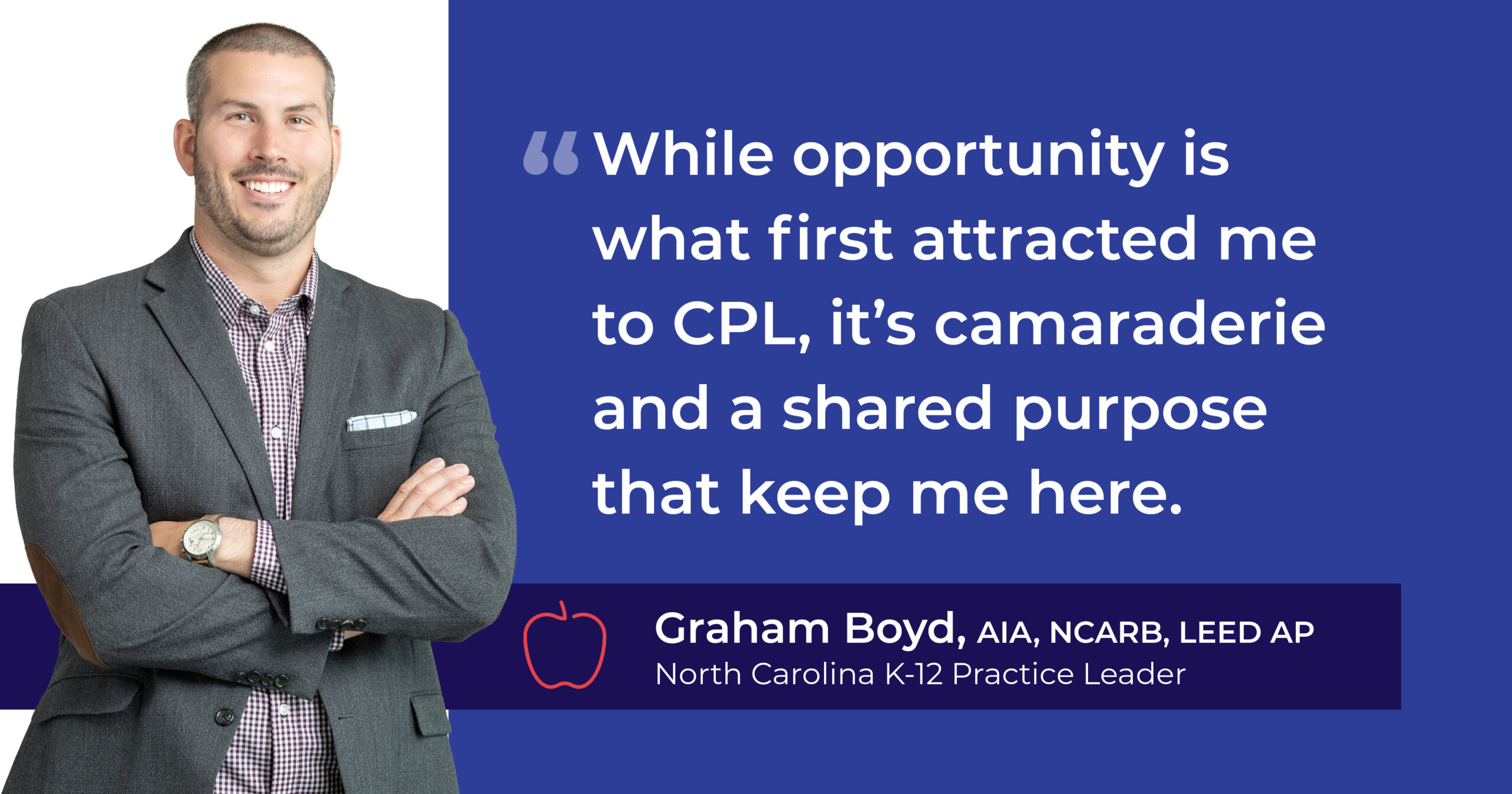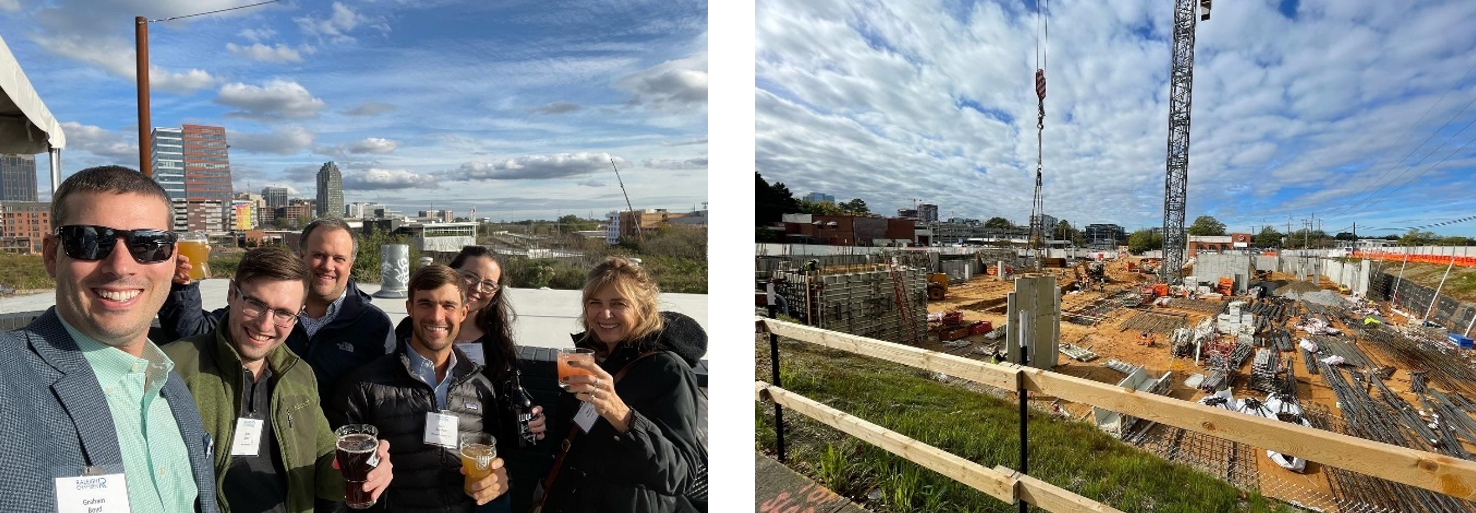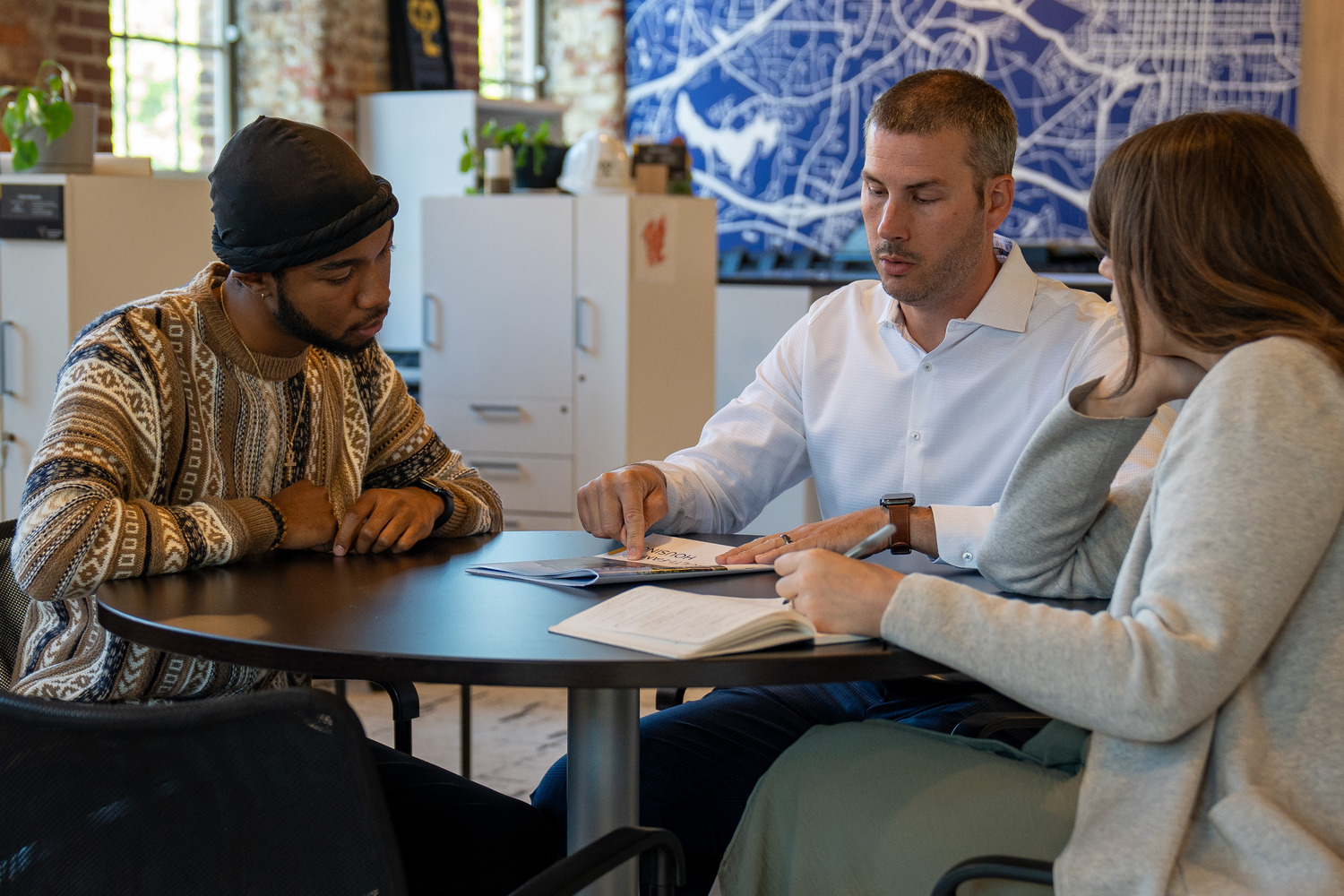
Graham Boyd, AIA, NCARB, LEED AP believes in the power of community to foster thriving school systems. As a seasoned K-12 architect leading our K-12 Practice team in Raleigh, he joins forces with districts and local leaders to envision everything from athletic fields to ground-up facilities that bring out the best in their students.
We spoke with Boyd to learn more about his career journey—here’s what he had to say.
What inspired you to join the industry?
My interest in problem-solving (and taking things apart to put them back together) grew into a passion for architecture during high school, thanks to a mechanical design class that led me to pursue my B. Arch at Rensselaer Polytechnic Institute.
I started my career in New York City, gaining experience in mixed-use, residential, commercial, hotel and restaurant projects. The fast-paced environment accelerated my learning, and I quickly earned my professional license, become a LEED AP and advanced to oversee an entire design studio.
Why K-12 design?
In 2016, I relocated to Raleigh and joined a firm specializing in K-12 design. Although I hadn’t previously considered the sector, my perspective changed when I helped create one of the East Coast’s first energy-positive schools.
Producing 175% of the energy it consumes, the project involved students in the design process, forming an “energy-wise” club that learned about sustainability through site visits.
Witnessing their excitement and curiosity was incredibly rewarding, sparking my love for K-12 architecture. With my own children now in school, I have skin in the game, and I view my work through the lens of both a parent and an architect.
What does a typical day look like in your current role as a Principal K-12 Architect at CPL?
My responsibilities include leading business development and building relationships with partners across North Carolina, like the Johnston County and Union County Public School Districts. No two days are the same; I might guide client visioning sessions, oversee QA/QC efforts, mentor junior designers or visit job sites to check in on construction progress.
I also collaborate with team members spanning Community, Healthcare and Higher Education. This cross-disciplinary approach brings together a diverse range of talents, allowing us to create more intentional design solutions tailored for any need.

No matter what each day brings, meaningful connections are always the highlight, and I schedule weekly check-ins to ensure our partners feel supported from kickoff to closeout and beyond.
What do you love most about the K-12 team’s design approach?
What I love most about our work is the potential for real human impact, and involving the community is key to achieving that. We believe it’s crucial to include ALL stakeholders in the design process, taking them on a ‘journey’ as a team. Together, we analyze the data and challenges, solving them like pieces of a puzzle.
During schematic design for a school in Jones County, my team brainstormed with teachers, administrators, parents and even local law enforcement to identify design opportunities that could enhance student safety.
The sheriff emphasized a need for visibility throughout the building, so we incorporated glass and glazing to create clear sightlines across key hallways, enabling comprehensive surveillance from three strategic locations. This is just one example of how public input results in thoughtful choices that make a tangible difference.
How does your background in sustainability tie into design?
A lot of our work involves renovating old facilities to reintroduce natural daylight. Many schools lack large windows or skylights, but incorporating these and other features can boost student performance and attendance. That’s why we use data-driven “green” practices to optimize solar orientation, air quality and daylight harvesting.

Boyd’s team is leveraging Matterport to create 3D scans of Johnston County schools, facilitating HVAC system and indoor air quality improvements.
What have you learned from community involvement that has made you a more effective K-12 architect?
Becoming embedded within the community is essential for the best K-12 project outcomes. Through the Leadership Raleigh program, I connect with public officials and organizations to resolve local issues. This involvement arms us with insider knowledge to design inclusive spaces that accommodate every student.
For instance, my cohort worked with the Inter-Faith Food Shuttle, Wake Forest Community College and the Ashley Christensen Restaurant Group to develop a culinary apprenticeship program. This initiative creates career pathways for disadvantaged learners who, in turn, help combat food insecurity by providing meals to the community.
The project underscored the critical link between meeting students’ basic needs and their ability to learn effectively. The more you understand a community’s challenges and priorities, the better you can support students—there’s immense value in learning everyone’s perspectives to address issues at the root.
I also stay current on evolving trends by attending conferences hosted by A4LE and state boards—and by coaching youth sports at the YMCA of the Triangle.

Boyd and other Leadership Raleigh participants toured the future site of Smoky Hollow Park, gaining insights into downtown development initiatives.
Why do you choose to stay at CPL?
We don’t have egos, and we never tell our clients what to do. Instead, we ask, ‘What do you want to achieve?’ This approach is what sets us apart, and it’s a huge reason I love my job.

Ultimately, what makes CPL special is our people. I’m part of a team with national resources but a local feel; I can call anyone in any office, and they’ll respond, ‘How can I help?’ There’s also a strong appreciation for work-life balance, with everyone understanding that family comes first.
While opportunity is what first attracted me to CPL, it’s camaraderie and a shared purpose that keep me here.
What advice do you have for aspiring A/E professionals?
Get involved and stay curious. Don’t be afraid to ask questions, even if you think they’re too simple. The quickest way to grow is by immersing yourself in all aspects of your field.
Whether it’s raising your hand at the office, joining the American Institute of Architects (AIA) or participating in study groups to prepare for your AREs, the more effort you put into engaging, the more you’ll gain in knowledge and experience.
